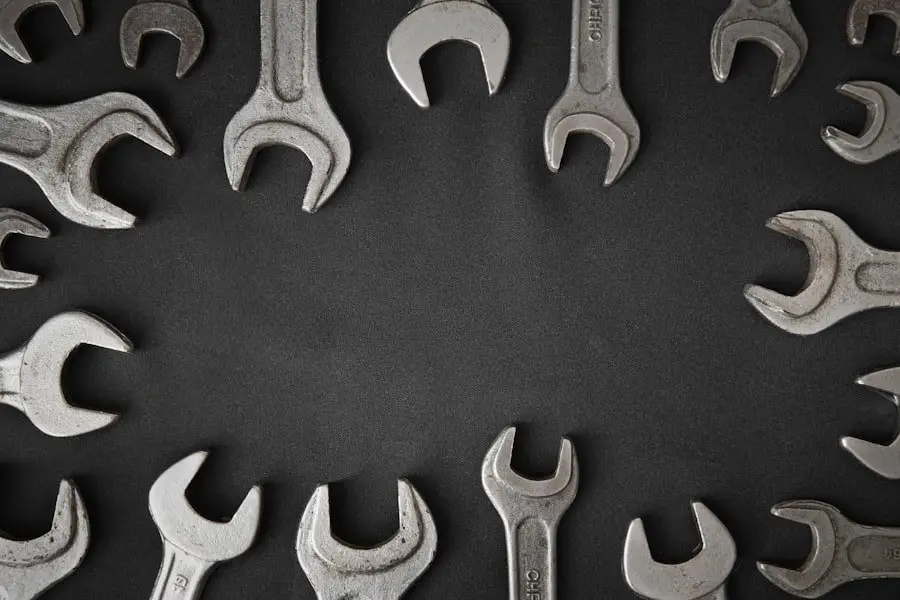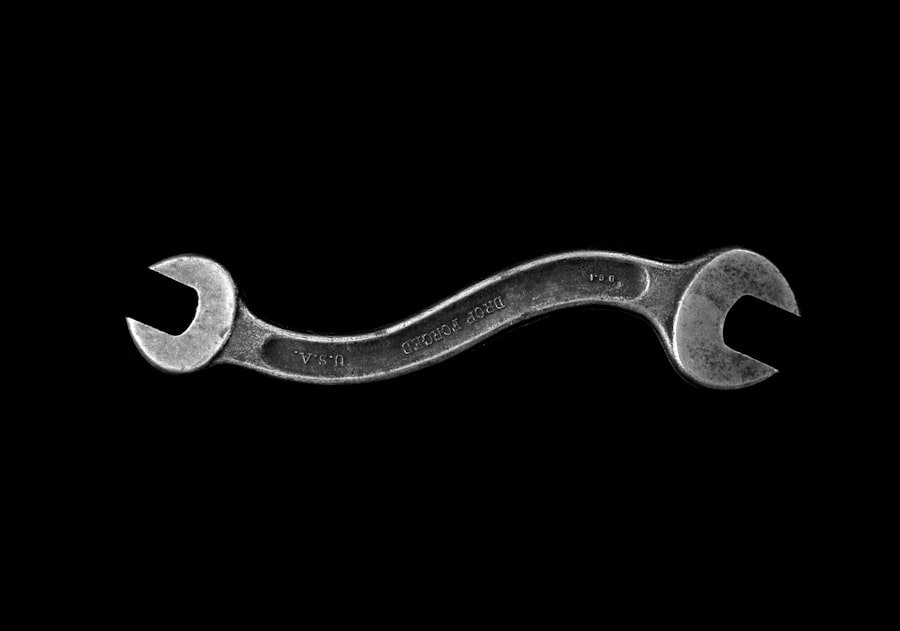Spark plugs are essential components of a vehicle’s ignition system, responsible for igniting the air-fuel mixture in the engine’s combustion chamber. This process is fundamental to the vehicle’s operation. As spark plugs age, they can accumulate deposits and wear down, potentially causing engine performance issues, including misfires and decreased fuel efficiency.
Regular inspection and replacement of spark plugs are necessary to maintain optimal engine performance and fuel economy. Fortunately, changing spark plugs is a relatively straightforward and affordable maintenance task that can be performed at home with proper tools and knowledge. This routine maintenance helps ensure the longevity and efficiency of a vehicle’s engine.
Key Takeaways
- Spark plugs are essential components of a vehicle’s ignition system, providing the spark needed to ignite the air-fuel mixture in the engine.
- The tools needed for changing spark plugs include a ratchet, spark plug socket, extension, and a gap tool.
- When changing spark plugs, it is important to follow a step-by-step guide to ensure proper installation and avoid damaging the plugs or the engine.
- Tips for removing old spark plugs include using a penetrating oil, being gentle when loosening the plugs, and inspecting the condition of the old plugs.
- When installing new spark plugs, it is crucial to properly gap the plugs, apply anti-seize lubricant, and tighten them to the manufacturer’s specifications.
- Testing the new spark plugs involves starting the engine and checking for smooth idling, acceleration, and overall performance.
- Maintenance and care for spark plugs include regular inspection, cleaning or replacing as needed, and following the vehicle manufacturer’s recommendations for spark plug replacement intervals.
Tools Needed for Changing Spark Plugs
Essential Tools for Spark Plug Replacement
A ratchet and socket set is necessary to remove the spark plugs from the engine. Additionally, a spark plug socket is required, which is specifically designed to fit over the spark plug and allow for easy removal and installation.
Specialized Tools for Spark Plug Maintenance
A spark plug gap tool is used to ensure that the gap between the spark plug electrodes is set to the correct distance. This tool is crucial in maintaining the optimal performance of the spark plugs.
Additional Materials for Spark Plug Installation
Other essential materials include anti-seize lubricant, which is applied to the threads of the new spark plugs to prevent them from seizing in the engine. A torque wrench is also necessary to tighten the spark plugs to the manufacturer’s recommended torque specification. Furthermore, dielectric grease is applied to the inside of the spark plug boot to prevent moisture and corrosion. Finally, compressed air can be used to blow any debris or dirt out of the spark plug wells before removing the old spark plugs.
Step-by-Step Guide to Changing Spark Plugs

Changing spark plugs can be done in a few simple steps. Here is a step-by-step guide to changing spark plugs:
1. Park the vehicle on a flat surface and allow the engine to cool down completely.
2.
Open the hood of the vehicle and locate the spark plugs. The number of spark plugs will depend on the number of cylinders in the engine.
3. Remove any engine covers or components that may be obstructing access to the spark plugs.
4.
Use compressed air to blow any debris or dirt out of the spark plug wells to prevent it from falling into the combustion chamber when the spark plugs are removed.
5. Use a ratchet and spark plug socket to carefully loosen and remove each spark plug from the engine. Be sure to keep track of which spark plug came from which cylinder.
6.
Inspect the old spark plugs for signs of wear, such as fouling, corrosion, or excessive electrode wear. This can indicate potential issues with the engine’s performance.
7. Use a spark plug gap tool to check and adjust the gap on the new spark plugs to the manufacturer’s specifications.
8.
Apply a small amount of anti-seize lubricant to the threads of the new spark plugs before installing them into the engine.
9. Carefully thread each new spark plug into the engine by hand to avoid cross-threading, then use a torque wrench to tighten them to the manufacturer’s recommended torque specification.
10. Apply a small amount of dielectric grease to the inside of each spark plug boot before reattaching them to the new spark plugs.
11.
Reinstall any engine covers or components that were removed to access the spark plugs.
12. Start the engine and listen for any abnormal noises or misfires, which could indicate a problem with the installation of the new spark plugs.
Tips for Removing Old Spark Plugs
| Tip | Description |
|---|---|
| Use penetrating oil | Apply penetrating oil to the spark plug threads and let it sit for a few hours to help loosen the old spark plugs. |
| Use a spark plug socket | Use a spark plug socket with a rubber insert to securely grip the old spark plug and prevent it from falling into the engine. |
| Turn gently | When removing the old spark plugs, turn them gently to avoid damaging the threads in the cylinder head. |
| Inspect the spark plug wires | Inspect the spark plug wires for any damage or wear and replace them if necessary. |
Removing old spark plugs can sometimes be a challenging task, especially if they have been in place for a long time. Here are some tips for removing old spark plugs:
– Use a penetrating oil: If the old spark plugs are difficult to remove, applying a penetrating oil to the threads and allowing it to soak for a few hours can help loosen them.
– Use a breaker bar: If the old spark plugs are particularly stubborn, using a breaker bar in conjunction with a ratchet can provide extra leverage for loosening them.
– Be gentle: When removing old spark plugs, it is important to be gentle and avoid using excessive force, as this can cause damage to the threads in the cylinder head.
– Use a spark plug socket with a rubber insert: A spark plug socket with a rubber insert can help grip the old spark plug and prevent it from falling into the combustion chamber when it is removed.
– Use a swivel socket: In some cases, access to the spark plugs may be limited, and a swivel socket can provide better maneuverability for removing them.
Installing New Spark Plugs
Installing new spark plugs is a relatively straightforward process, but it is important to take care and follow proper procedures to ensure they are installed correctly. Here are some tips for installing new spark plugs:
– Use anti-seize lubricant: Applying a small amount of anti-seize lubricant to the threads of the new spark plugs before installation can help prevent them from seizing in the engine.
– Hand-tighten first: When installing new spark plugs, it is important to carefully thread them into the engine by hand first to avoid cross-threading, then use a torque wrench to tighten them to the manufacturer’s recommended torque specification.
– Check and adjust gap: Before installing new spark plugs, it is important to check and adjust the gap between the electrodes using a spark plug gap tool to ensure it matches the manufacturer’s specifications.
– Apply dielectric grease: Applying a small amount of dielectric grease to the inside of each spark plug boot before reattaching them can help prevent moisture and corrosion.
Testing the New Spark Plugs

Initial Engine Check
Start the engine and listen for any unusual noises or misfires that could indicate a problem with the spark plug installation. This initial check will give you an idea of whether the spark plugs are working as expected.
Idling Performance
A properly installed set of new spark plugs should result in smooth idling and consistent engine performance. If the engine idles rough or unevenly, it may be a sign that the spark plugs are not installed correctly or are faulty.
Long-Term Monitoring
Over time, monitor fuel efficiency to see if there are any improvements after installing new spark plugs. As spark plugs can have an impact on fuel economy, this long-term check will help you determine if the new spark plugs are making a positive difference.
Maintenance and Care for Spark Plugs
To ensure optimal performance and longevity of spark plugs, it is important to follow proper maintenance and care practices:
– Regular inspection: It is important to regularly inspect spark plugs for signs of wear, such as fouling, corrosion, or excessive electrode wear, and replace them as needed.
– Follow manufacturer’s recommendations: Follow the manufacturer’s recommendations for replacing spark plugs based on mileage or time intervals.
– Use quality spark plugs: When replacing spark plugs, it is important to use high-quality, OEM-recommended spark plugs that are designed for your specific vehicle.
– Keep connections clean: Keep connections clean by applying dielectric grease to the inside of each spark plug boot before reattaching them to prevent moisture and corrosion.
– Monitor engine performance: Pay attention to any changes in engine performance, such as misfires or rough idling, as these can indicate potential issues with the spark plugs. In conclusion, changing spark plugs is an important maintenance task that can have a significant impact on a vehicle’s performance and fuel efficiency. By following proper procedures and using the right tools, anyone can successfully change their own spark plugs at home.
Regular inspection, maintenance, and care for spark plugs are essential for ensuring optimal engine performance and longevity.
If you’re looking to change your spark plugs, you may also be interested in learning about the latest developments in Indian education. Check out this article to stay informed about the changes and controversies in the CBSE education system.
FAQs
What are spark plugs?
Spark plugs are essential components of a vehicle’s ignition system. They ignite the air-fuel mixture in the engine’s combustion chamber, creating the necessary power to start the engine and keep it running.
Why do spark plugs need to be changed?
Over time, spark plugs can become worn out, leading to decreased engine performance, misfiring, and difficulty starting the vehicle. Changing spark plugs at regular intervals helps maintain optimal engine performance and fuel efficiency.
How often should spark plugs be changed?
The frequency of spark plug changes can vary depending on the vehicle and the type of spark plugs used. As a general guideline, spark plugs should be replaced every 30,000 to 100,000 miles, or as recommended by the vehicle manufacturer.
What tools are needed to change spark plugs?
Common tools needed to change spark plugs include a ratchet, spark plug socket, extension, and a gap tool. It’s important to use the correct size and type of tools to avoid damaging the spark plugs or the engine.
Can I change spark plugs myself?
Changing spark plugs is a relatively straightforward task, but it does require some mechanical knowledge and the right tools. If you’re comfortable working on your vehicle and have the necessary tools, you can likely change the spark plugs yourself. However, if you’re unsure, it’s best to consult a professional mechanic.
What are the benefits of changing spark plugs?
Changing spark plugs can improve engine performance, fuel efficiency, and overall vehicle reliability. It can also prevent potential issues such as misfiring, rough idling, and difficulty starting the engine.




















+ There are no comments
Add yours